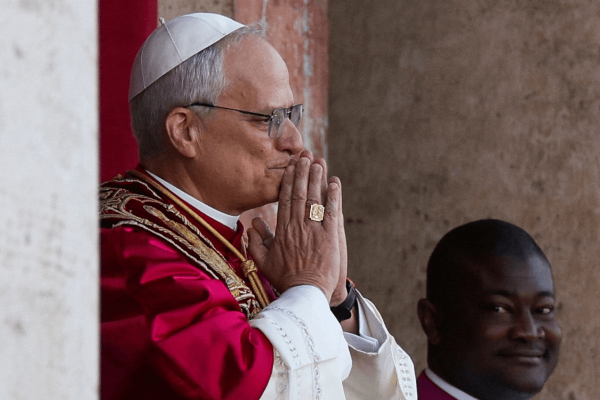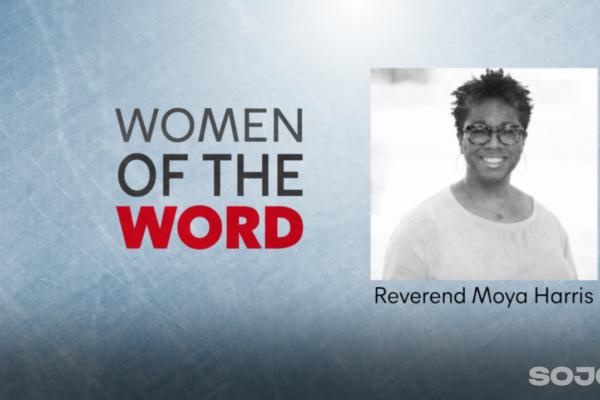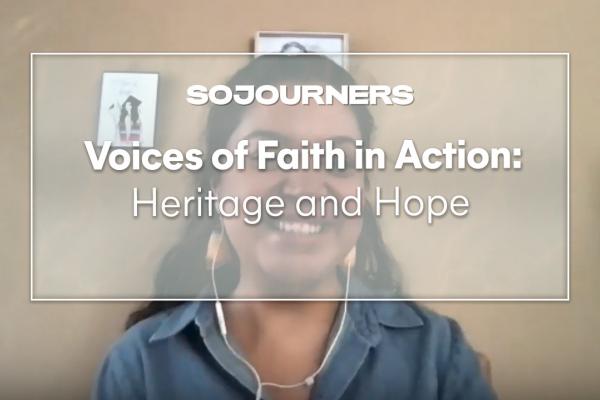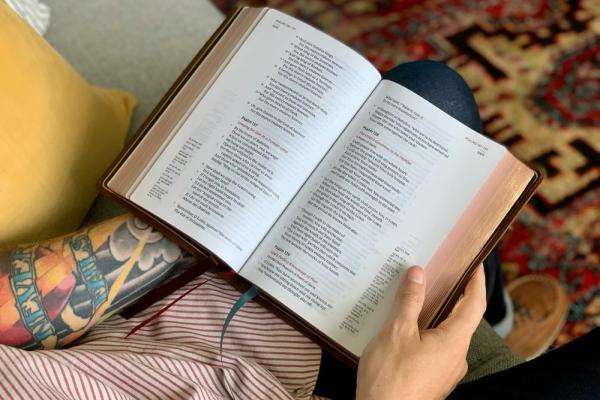Churches are typically peaceful. But the silence inside San Francisco’s iconic Grace Cathedral was particularly welcoming last Wednesday.
Hundreds gathered within the gothic building for a Multi-Faith Service of Wondering and Commitment hosted by the Episcopal Diocese of California and nonprofits GreenFaith and Interfaith Power & Light. Participants were invited to reflect on and be inspired by the wonders of creation. But they were also encouraged to make bold new commitments to protect the planet and its inhabitants from the ravages of climate change.
“What we love, we will protect,” the Rt. Rev. Marc Handley Andrus, Episcopal Bishop of California, told the estimated 500 attendees. “That’s the spirit that we’re undertaking with this service.”
The Multi-Faith Service was one of the opening events of the three-day Global Climate Action Summit, which also began in San Francisco on Wednesday. Leaders and people from around the world gathered in the city to celebrate achievements and make new commitments. As wildfires and hurricanes fueled by climate change devastated Americans, the conference offered a ray of hope.
But environmental activists protested the Summit too, including a group that stood outside Grace Cathedral as the Service began with a sign reading, “Governor Brown, Shame On YOU.” California’s leader convened the Summit and set the state on an ambitious path toward renewable energy, including committing California to 100 percent renewable energy by 2045. Yet, his administration also permits oil and gas drilling near homes, hospitals, and schools.
Amidst the shouting and jockeying for media attention, the Multi-Faith Service was a reminder of how far the climate movement has come in the United States and the necessity of stronger resolutions to protect creation.
Christians have long seen a connection between their faith and caring for creation. In the Hebrew Scriptures, God created the Earth and its inhabitants, including humans. God gave humans a special task — dressing and keeping the Garden of Eden. The idea of stewardship and creation care comes from this basic, but critical, direction.
A desire to care for the environment also stems from the Christian traditions of compassion and love. Congregations have long worked to alleviate hunger, lift the poor and the vulnerable, and comfort the sick. Creating community gardens, making energy more affordable, and working to avoid the worst effects of climate change, which are disproportionately felt by low-income communities, stem from these traditions.
As the wildfires, storms, floods, droughts, and heat waves associated with climate change become more severe, so has awareness and action among people of faith. Two years ago, at St. John the Divine Cathedral in New York City, religious leaders and members of the spiritual community gathered beneath two giant, LED-lit, flying phoenixes to voice their vows to reverse climate change. Less than a year later, Pope Francis published a landmark encyclical calling on all people to “care for our common home.”
This year, the Episcopal General Convention passed 18 creation care resolutions, including committing the denomination to the Paris Accord, a global agreement to reduce climate-change causing emissions. The Convention also put in place a newly developed carbon tracker, which functions like a Fitbit tracks steps. The web-based application is currently being piloted by four congregations before being released in 2019.
“It’s very accessible and usable,” Rev. Andrus said. “You can see how your congregation is doing and the Diocese of California.”
As a testament to the growth of the creation care movement, hundreds of people of faith turned out to participate in the “Rise for Climate, Jobs & Justice” march in San Francisco the weekend before the Summit. The march started with an interfaith service along the city’s waterfront. Rev. Susan Hendershot, president of Interfaith Power & Light, expressed her surprise at the number of people in attendance.
“The wild parrots in the trees were noisy, but the couple hundred people in attendance were so quiet,” Rev. Hendershot said. “It felt full and rich. There was a lot of presence and holding space intentionally around prayer, meditation, and loving kindness.”
The same ethos was present at the Multi-Faith Service in Grace Cathedral. The main hall was so silent, you could hear a pen click. And individuals and congregations were eager to make public resolutions to minimize their impact on the planet. Leaders at the service unfurled a scroll containing the names of over 12,000 congregations that had committed to clean energy.
The faith community’s strong engagement for a livable future offers a lot of hope. But, as the protestors standing outside the Cathedral highlight, to ensure a livable future, engagement should be complete.
All congregations should commit to 100 percent renewable energy, reduce the carbon footprint of members, and press policymakers to make major commitments. What happens once the Multi-Faith Service attendees leave the gothic walls and stained-glass windows of Grace Cathedral really matters, according to GreenFaith founder Rev. Fletcher Harper. Widespread action needs to happen quickly and at scale.
“We’ve got people in North and South Carolina who are evacuating their homes because of a hurricane,” Rev. Harper said. “Religious leaders need to move from rhetoric into action.”
GreenFaith is coordinating a global, interfaith campaign called Living the Change. Next month, from Oct. 7-14 they are inviting groups to host local sustainability events around the globe to inspire more commitments and raise awareness through an Earth-friendly, vegan community celebration. GreenFaith anticipates more than 100 faith events during the campaign.
The faith community is an important voice as leaders respond to the emergency of climate change. The spiritual qualities of a Christian life – compassion, reconciliation, forgiveness, and courage – can serve as a touchstone for all scared, grieving, and lost people. The work can also reconnect Christian individuals and congregations to each other and creation.
“The best human life cares about the vulnerable and struggles with injustice,” Rev. Andrus said. “That’s the spiritual reality that we’re working with. Our spiritual lives need nurture.”
Got something to say about what you're reading? We value your feedback!







